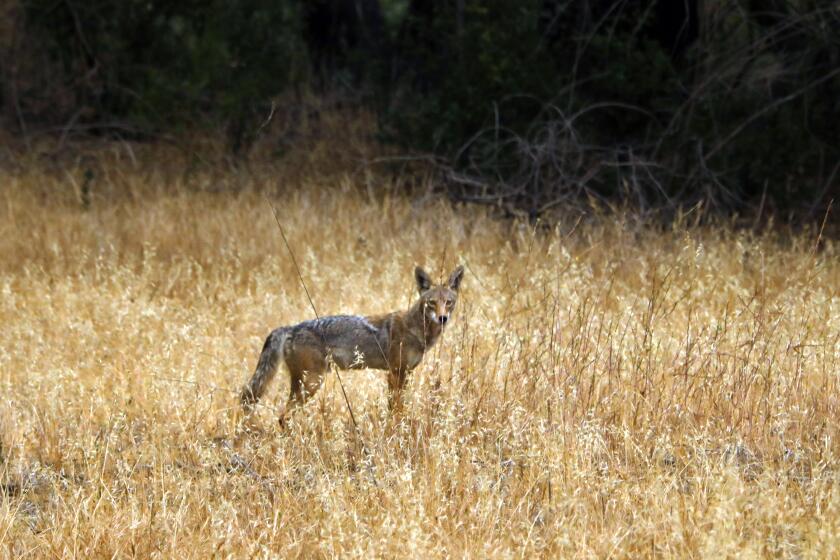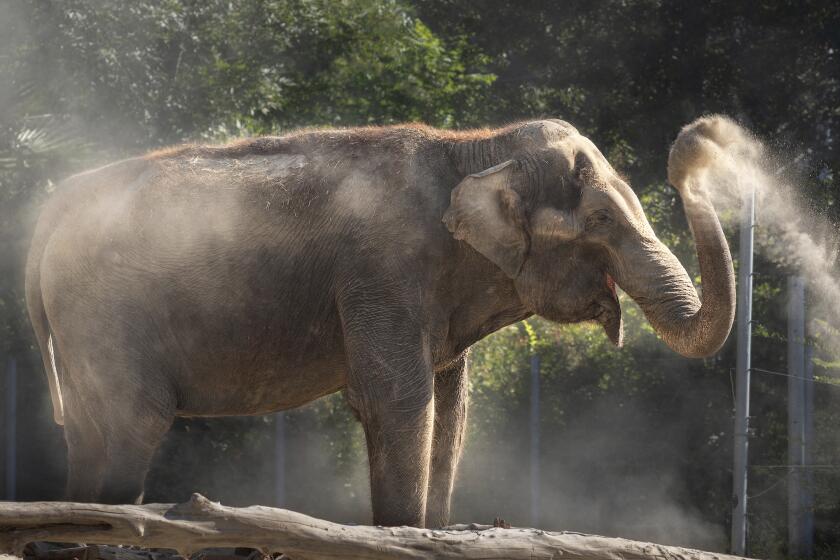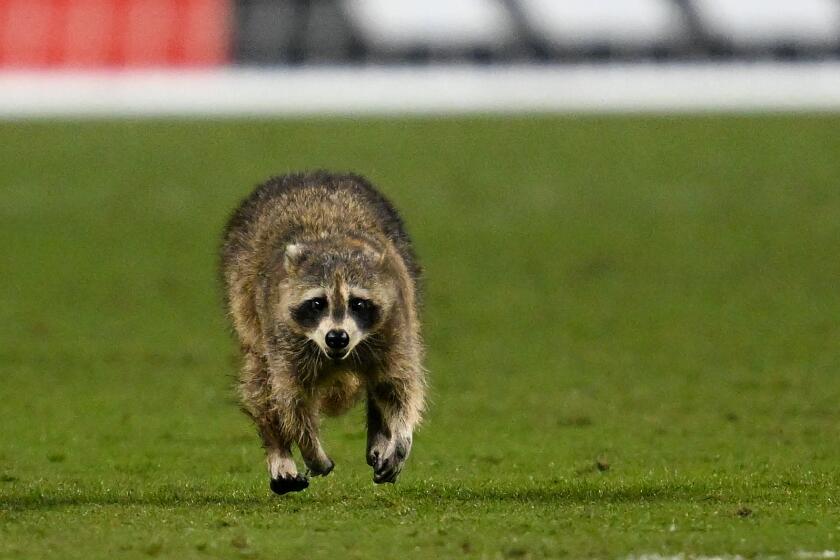Zoo Conservation Program Starts in the Parking Lot
As soon as the rains started last week, Bill Lukehart rushed out to the parking lot at the Los Angeles Zoo to take photographs.
The zoo’s 39-year-old project manager was thrilled to see rainwater filling a trench that runs along the zoo’s roadway in Griffith Park. He hopes that soon the zoo will have an innovative “green” parking lot, lined with rows of native plants that help clean and control storm water, and “solar trees” that generate electricity.
The solar trees -- steel structures covered with solar panels and photovoltaic cells -- are on Lukehart’s wish list, waiting for the necessary funds. But the parking lot already includes a demonstration of what the project could be.
As rainwater accumulates in the trench, the runoff is sucked up by native sycamores and grasses. The plants clean the water and release it back into the air by the process of transpiration.
The zoo is in the early stages of a major makeover, but it’s the parking lot that gets Lukehart really jazzed. The parking lot of tomorrow, he said, will be a compelling exhibit in its own right -- showing the many benefits of building in environmentally friendly ways.
The parking lot also will be part of the California-themed section of the zoo, which includes the entrance and the Channel Islands-inspired Sea Lions Cliffs, now under construction.
“The mission of the zoo is about education and conservation, and what better place to demonstrate sustainable building practices than a California-themed parking lot?” he said. “We want to be a regional model.”
The 30-acre lot that he envisions, on the same site as the existing one, will provide 3,500 parking spaces. About 1.5 million people visit the zoo each year.
The lot already is being rebuilt to better reflect its Southern California setting. The Australian eucalyptus trees are being replaced with native sycamores, oaks and other indigenous plants.
Without irony, Lukehart refers to the parking lot, with its burgeoning number of native plants, as a garden -- one that reflects the subtle seasons of Greater Los Angeles.
“When you arrive in this garden this time of year, the sycamore trees are turning California gold, and the clumping grasses are going to seed,” he said. “It gives you a sense of place. You’re immersed in California here.”
The parking lot will have greenbelts or swales of native trees and plants, such as those along the road.
“These are replicated riparian corridors where water can get back into the ground,” he said.
Permeable paving also will be used. Before the parking lot was asphalted, Lukehart said, 60% of the rainwater that fell on the area went back into the ground. “As soon as you put in asphalt, 98% of the water goes directly to the L.A. River and then to the ocean,” he said.
In 2000, as plans for the zoo’s makeover were being hammered out, environmental groups were asked to identify what was most important to them.
Steve Hartman, treasurer of the California Native Plant Society, praised the zoo planners for getting input from concerned people early in the process.
“They did the right thing,” he said.
Lukehart ticks off the key elements of the innovative lot. Its most visionary feature is the solar trees. Covering three acres, these futuristic structures will shade visitors’ cars and may generate 30% of the electricity that the zoo uses, Lukehart said.
Without shade, the asphalt and the surrounding area get hotter when baked by the sun, he said, and “more heat means more air conditioning.”
The plan also calls for three acres of native trees.
The Economic Development Group of the Los Angeles Department of Water and Power will invest $3 million in the project. The zoo hopes to get the rest of the money from grants and other city funds.
Lukehart already can see what the new lot will be like. Schoolchildren, getting off their buses, will spot the parade of solar trees and ask their teachers, “What’s that?” There will be explanatory signs and exhibits, and zoo docents will be able to start their spiels in the parking lot by explaining how plants filter water and the purpose of photovoltaic cells.
For Lukehart, it’s every bit as exciting as swimming hippos. He predicts: “All our guests are going to see this.”
More to Read
Start your day right
Sign up for Essential California for news, features and recommendations from the L.A. Times and beyond in your inbox six days a week.
You may occasionally receive promotional content from the Los Angeles Times.






